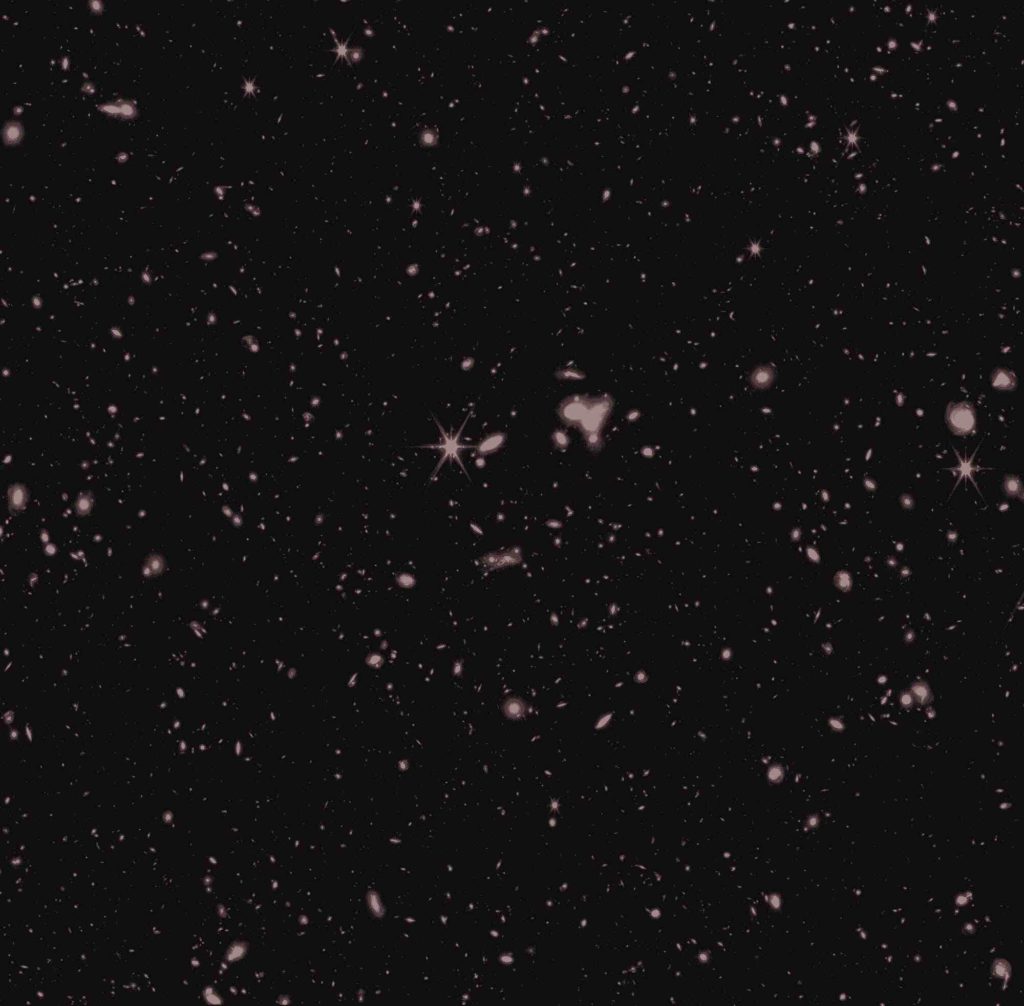UNITED STATES: In a groundbreaking achievement, scientists using the James Webb Space Telescope (JWST) have discovered the most distant active supermassive black hole ever observed. The black hole resides within a galaxy called CEERS 1019, which existed a mere 570 million years after the Big Bang, making it an extraordinary find in the realm of cosmology.
Led by Steven Finkelstein of the University of Texas at Austin, the JWST’s Cosmic Evolution Early Release Science (CEERS) Survey has unveiled not only this record-breaking black hole but also two additional smaller black holes. These findings provide invaluable insights into the early universe and challenge existing theories about the formation and growth of black holes.
JWST provides insights into supermassive black hole
The black hole within CEERS 1019 is truly remarkable due to its relatively low mass compared to others found in the early universe. Weighing in at around 9 million solar masses, it is significantly smaller than its more massive counterparts, which typically exceed 1 billion solar masses. This newfound black hole closely resembles the one residing at the center of our own Milky Way galaxy, which is approximately 4.6 million times the mass of the Sun.

One of the significant challenges in studying these early black holes is their faintness. The immense brightness of more massive black holes makes them easier to detect, as they actively consume matter that emits light while swirling towards the black hole. However, CEERS 1019’s black hole, despite its smaller size, presents a puzzle: How did it form so soon after the universe’s birth? The JWST’s observations have enabled scientists to make definitive detections of these smaller black holes, shedding light on their existence in the early cosmos.
The researcher who made this finding, Rebecca Larson of the University of Texas at Austin, says that using this telescope to see a faraway object is similar to using it to study data from black holes in nearby galaxies. There are countless spectral lines to study.
The astronomers were able to identify emissions from the black hole and its host galaxy by carefully examining the spectrum data. Additionally, they have calculated the black hole’s gas consumption rate and assessed the galaxy’s star creation rate.
Surprisingly, CEERS 1019 appears as three distinct clumps rather than a single circular disk when observed visually. Jeyhan Kartaltepe of the Rochester Institute of Technology suggests that a galaxy merger might be fueling the activity within this black hole and contributing to increased star formation.
These observations indicate a dynamic and evolving early universe, challenging previous assumptions about structure and galactic interactions at such great distances.
The CEERS survey has also yielded significant findings beyond black holes. Researchers were able to precisely determine the distances and ages of galaxies in the early cosmos thanks to the JWST’s exquisite spectra. Pablo Arrabal Haro of NSF’s NOIRLab and Seiji Fujimoto of the University of Texas at Austin identified eleven galaxies that existed between 470 and 675 million years after the Big Bang.
The detection of these distant and highly active galaxies challenges previous expectations, opening new avenues for understanding star formation and galaxy evolution throughout cosmic history.
The JWST has transformed our understanding of things in the early cosmos with its astounding capabilities. According to Finkelstein, “Up until recently, study about things in the early cosmos was primarily theoretical. We can now begin to precisely measure black holes and galaxies thanks to Webb, in addition to seeing them at great distances. That is the telescope’s incredible power.”
The JWST’s data collection has the potential to further unlock the secrets of early black hole formation and produce updated models of their development and evolution in the early cosmos.
As the astronomical community eagerly awaits more insights from the CEERS survey, it is clear that the James Webb Space Telescope has ushered in a new era of cosmological exploration, unveiling the wonders of the early universe and providing a wealth of knowledge about our cosmic origins.
Also Read: JWST Provides Glimpses of Universe’s First Stars, Unveiling Cosmic Origins



